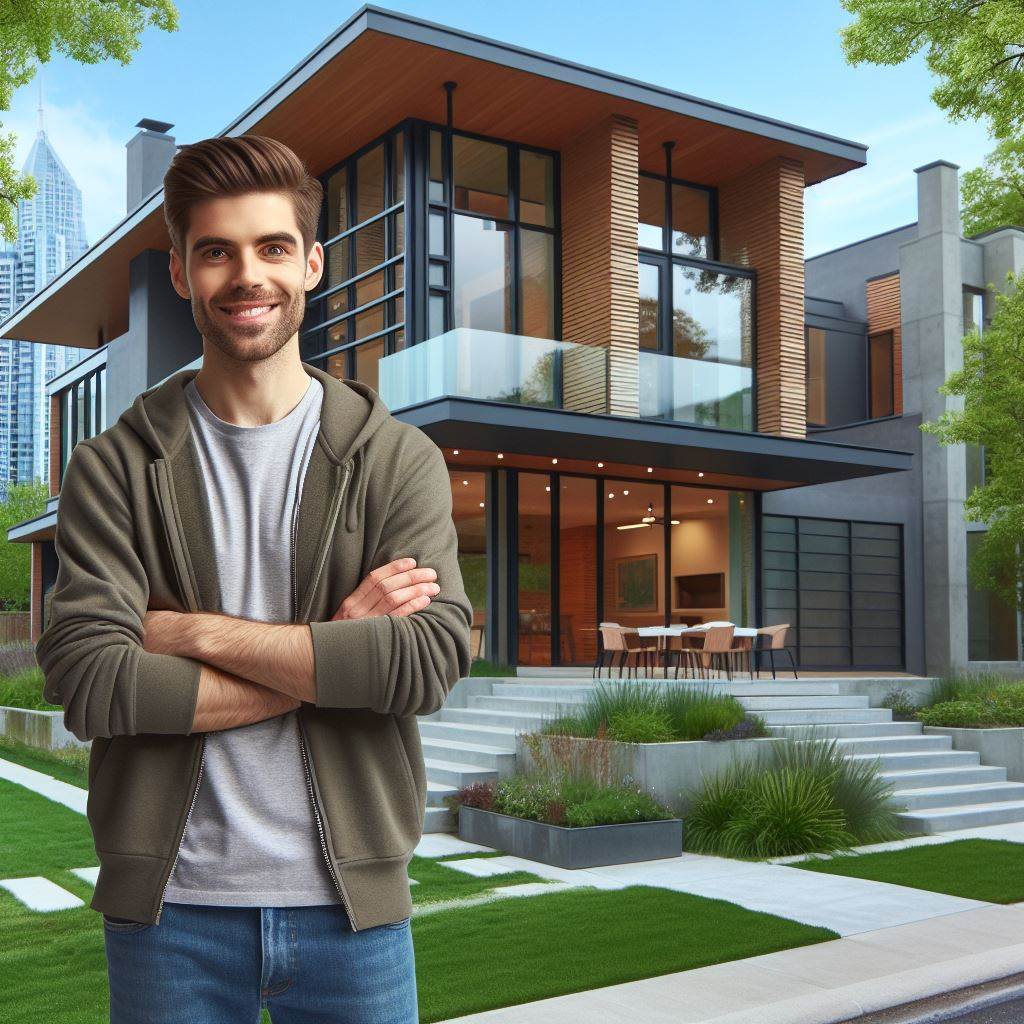Introduction
With the increasing aging population, senior living markets have gained significant importance.
These markets are dedicated to providing specialized housing, healthcare, and lifestyle services to elderly individuals.
The significance of senior living markets lies in their ability to meet the unique needs and preferences of the aging population.
In recent years, real estate trends in senior living markets have been evolving to meet the changing demands of seniors.
One prevalent trend is the development of senior-friendly communities that promote active and independent living.
These communities often offer a range of amenities such as fitness centers, social activities, and onsite healthcare facilities.
Additionally, the demand for technology-enabled senior living communities is growing.
These communities integrate smart home features, remote healthcare monitoring systems, and virtual engagement platforms to enhance the quality of life for seniors.
Another emerging trend is the focus on urban senior living options.
With the desire for connectivity and convenience, seniors are increasingly seeking out residences in urban areas that provide access to amenities, entertainment, and healthcare services.
Furthermore, there is a shift towards personalized care models in senior living markets.
This emphasizes individualized healthcare plans, flexible service packages, and customized living arrangements to cater to the diverse needs and preferences of seniors.
In essence, the senior living markets play a crucial role in meeting the housing and care needs of the aging population.
Understanding the real estate trends in these markets is essential for industry professionals, policymakers, and individuals planning for their future.
By recognizing and adapting to these trends, the senior living industry can successfully provide innovative solutions and improve the quality of life for seniors.
Transform Your Real Estate Decisions
Unlock personalized real estate insights crafted just for you. Get actionable advice designed to amplify your success.
Get StartedCurrent state of senior living markets
Population trends and demographics
The senior population is growing rapidly due to increased life expectancy and declining birth rates.
Baby boomers are reaching retirement age, leading to a significant increase in the demand for senior living facilities.
The aging population is becoming more diverse, with different cultural backgrounds and preferences.
There is a shift towards aging in place, as seniors prefer to stay in their homes with support services instead of moving to traditional senior living communities.
Existing challenges and opportunities
The senior living industry faces challenges in meeting the evolving demands of the aging population.
There is a need for innovative and flexible senior housing options that cater to different levels of care and preferences.
Affordability is a major concern, as many seniors struggle to afford quality senior living options.
Technology presents opportunities for improving the quality of life for seniors and enhancing the efficiency of senior living facilities.
The rise of specialized senior living communities, such as LGBT-friendly or dementia care-focused facilities, presents niche opportunities.
COVID-19 impact on senior living facilities
The COVID-19 pandemic has had a significant impact on senior living facilities.
Outbreaks in senior living communities have raised concerns about the safety and health of residents.
Increased infection control measures and restrictions on visitors have affected the social well-being of seniors.
The pandemic has highlighted the importance of preparedness and flexibility in senior living facilities.
Technology has played a crucial role in mitigating the impact of COVID-19 by enabling remote communication and providing virtual healthcare services.
Showcase Your Real Estate Business
Publish your company profile on our blog for just $200. Gain instant exposure and connect with a dedicated audience of real estate professionals and enthusiasts.
Publish Your ProfileIn fact, the current state of senior living markets is influenced by population trends, challenges, and the impact of the COVID-19 pandemic.
As the senior population continues to grow and diversify, there is a need for innovative and flexible housing options.
Affordability, technological advancements, and specialized communities present both challenges and opportunities for the senior living industry.
COVID-19 has emphasized the importance of safety and preparedness in senior living facilities and highlighted the role of technology in maintaining social connections and providing healthcare services.
Moving forward, the senior living industry must adapt to meet the evolving needs and preferences of seniors in order to thrive in the coming years.
Read: Luxury Condos: City Living at Its Finest
Emerging trends in senior living markets
The senior living market is experiencing significant changes, driven by shifting demographics and evolving preferences.
To meet the needs of an aging population, the real estate industry must adapt and embrace emerging trends in senior living markets.
Demand for age-friendly housing options
One major trend is the increasing demand for age-friendly housing options.
Seniors desire homes that are accessible and adaptable to their changing mobility levels.
This includes features such as wheelchair ramps, grab bars, wider doorways, and non-slip flooring.
The incorporation of universal design principles ensures that the homes can accommodate seniors with varying physical abilities.
Additionally, the integration of technology in these houses enhances convenience and safety.
Smart home systems, remote monitoring devices, and emergency response systems enable seniors to live independently while providing peace of mind to their families.
Expansion of senior co-housing communities
Another growing trend is the expansion of senior co-housing communities.
These communities promote shared living arrangements among older individuals who seek companionship and cost-sharing opportunities.
By sharing expenses, seniors can enjoy a higher quality of life without the financial burden of maintaining a single household.
Furthermore, co-housing communities emphasize community engagement and social connectivity.
Residents have access to shared amenities, participate in group activities, and create a supportive network of peers.
This fosters a sense of belonging and combats social isolation, which is often a concern among seniors.
Growth of specialized housing for seniors with specific needs
Specialized housing for seniors with specific needs is also experiencing significant growth.
Memory care facilities cater to individuals with Alzheimer’s or other forms of dementia.
These facilities provide a safe and supportive environment for seniors with memory loss, incorporating specialized programs and therapies to enhance their quality of life.
Assisted living facilities with specialized medical services focus on meeting the healthcare needs of seniors with specific conditions.
They offer personalized care plans, access to on-site medical professionals, and coordination of specialized treatments.
This targeted approach ensures that seniors with complex medical needs receive the necessary support while maintaining their independence.
In short, the senior living market is undergoing transformative changes to accommodate the evolving needs and preferences of the aging population.
The demand for age-friendly housing options, the expansion of senior co-housing communities, and the growth of specialized housing for seniors with specific needs are prominent trends shaping the industry.
By recognizing and embracing these trends, the real estate market can proactively address the housing and lifestyle needs of seniors, ensuring a vibrant and fulfilling experience in their golden years.
Read: Millennial Buyers: Impact on 2024 Prices
Showcase Your Real Estate Business
Publish your company profile on our blog for just $200. Gain instant exposure and connect with a dedicated audience of real estate professionals and enthusiasts.
Publish Your Profile
Future predictions and forecasts for 2024
In the coming years, the senior living market is expected to undergo several significant changes.
Let’s take a look at some of the future predictions and forecasts for 2024:
Increased demand due to aging baby boomer generation
- The aging baby boomer generation will fuel an increased demand for senior living options.
- As more baby boomers reach retirement age, the need for specialized senior housing will grow.
- Developers and investors will capitalize on this demand by creating more senior living communities.
- Social and lifestyle amenities will play a crucial role in attracting and satisfying the needs of this generation.
Shift towards more personalized and tailored senior living options
- Seniors in 2024 will have more options for personalized and tailored living arrangements.
- Communities will offer various housing styles, ranging from single-family homes to apartments and cottages.
- Flexible contracts will allow seniors to choose the level of assistance and services they require.
- By providing more choice and autonomy, senior living communities will cater to individual preferences and needs.
Integration of technology in senior living communities
- Technology will play a crucial role in improving the quality of life for seniors in 2024.
- Smart home systems will allow for remote monitoring of health and safety in senior living residences.
- Virtual reality and video communication platforms will enable seniors to stay connected with loved ones.
- Automation and robotics will assist with daily tasks, enhancing independence and reducing the need for support staff.
Higher emphasis on wellness and active lifestyle amenities
- Senior living communities in 2024 will place a higher emphasis on wellness and active lifestyle amenities.
- Wellness centers will offer a wide range of fitness programs, including yoga, tai chi, and aquatic exercises.
- Outdoor spaces will be designed to promote physical activity, with walking paths, gardens, and sports facilities.
- Nutrition and healthy dining options will be prioritized to support seniors’ overall well-being.
In general, the future of senior living in 2024 looks promising.
With the aging baby boomer generation driving demand, senior living communities will need to adapt and provide personalized, technology-integrated, and wellness-focused options.
By embracing these trends, the industry can enhance the quality of life for older adults and ensure their continuing happiness and fulfillment.
Read: Eco-Luxury: Green Trends in High-End Homes
Implications for real estate developers and investors
Opportunities for new construction and renovations in senior living
The growing senior population presents a significant opportunity for real estate developers and investors.
New construction of senior living communities, including independent living, assisted living, and memory care facilities, will be in high demand.
Renovations and upgrades of existing senior living properties will also be necessary to meet the changing needs and preferences of seniors.
Importance of partnerships with healthcare providers
Senior living communities that have strong partnerships with healthcare providers will have a competitive advantage.
Collaborations with healthcare organizations can provide access to specialized services and resources for residents.
Healthcare partnerships can also help in attracting potential residents and ensuring the long-term viability of the senior living community.
Considerations for location and market analysis
Careful location selection is crucial for the success of senior living developments.
Developers and investors should consider factors such as proximity to healthcare facilities, amenities, and transportation.
Conducting thorough market analysis is essential to identify demand, competition, and potential risks in the target market.
Potential challenges and risks in senior housing investments
The senior living market is subject to various risks, including changes in healthcare policies and regulations.
Economic downturns can impact the financial stability of senior living communities.
Operational challenges, such as staffing shortages and rising costs, can affect the profitability of senior housing investments.
There is also a risk of oversupply in certain markets, leading to increased competition and potentially lower occupancy rates.
Developers and investors must carefully assess these risks and implement strategies to mitigate them.
In review, the senior living market presents opportunities for real estate developers and investors.
New construction and renovations in senior living communities are in high demand due to the growing senior population.
Partnerships with healthcare providers can provide added value and attract potential residents.
Location selection and market analysis are crucial for successful senior living developments.
However, there are potential challenges and risks, such as policy changes, economic downturns, and operational issues.
It is essential for developers and investors to carefully evaluate these factors and implement appropriate strategies to ensure the success of their senior housing investments.
Read: Luxury Market Trends: US Real Estate 2024
Conclusion
Recap of key points discussed
- Demographic shifts: The aging population is growing, leading to increased demand for senior living options.
- Technology integration: Innovations like smart home features and telehealth services enhance residents’ quality of life.
- Amenities catering to diverse preferences: Communities offering a range of activities and services attract a broader audience.
Importance of adapting to evolving senior living market trends
Adapting to these trends is imperative for real estate professionals.
By staying abreast of demographic changes and technological advancements, they can tailor their offerings to meet the evolving needs of senior residents.
Integrating smart technologies not only improves efficiency but also enhances the overall living experience.
Showcase Your Real Estate Business
Publish your company profile on our blog for just $200. Gain instant exposure and connect with a dedicated audience of real estate professionals and enthusiasts.
Publish Your ProfileMoreover, providing diverse amenities ensures that communities remain attractive and relevant in a competitive market landscape.
Encouragement for real estate professionals to explore opportunities in this sector
Real estate professionals are urged to seize the opportunities presented by the senior living market.
As the demand for specialized housing options continues to rise, there is a growing need for innovative solutions and community-centric approaches.
By embracing these opportunities, professionals can contribute to the well-being and satisfaction of senior residents while also capitalizing on a lucrative market segment.
Additionally, fostering partnerships with healthcare providers and technology companies can further enhance the value proposition of senior living communities.
The senior living market presents promising prospects for real estate professionals willing to adapt and innovate.
By understanding the key trends shaping this sector and leveraging them to create tailored solutions, professionals can position themselves for success in an increasingly dynamic market environment.




